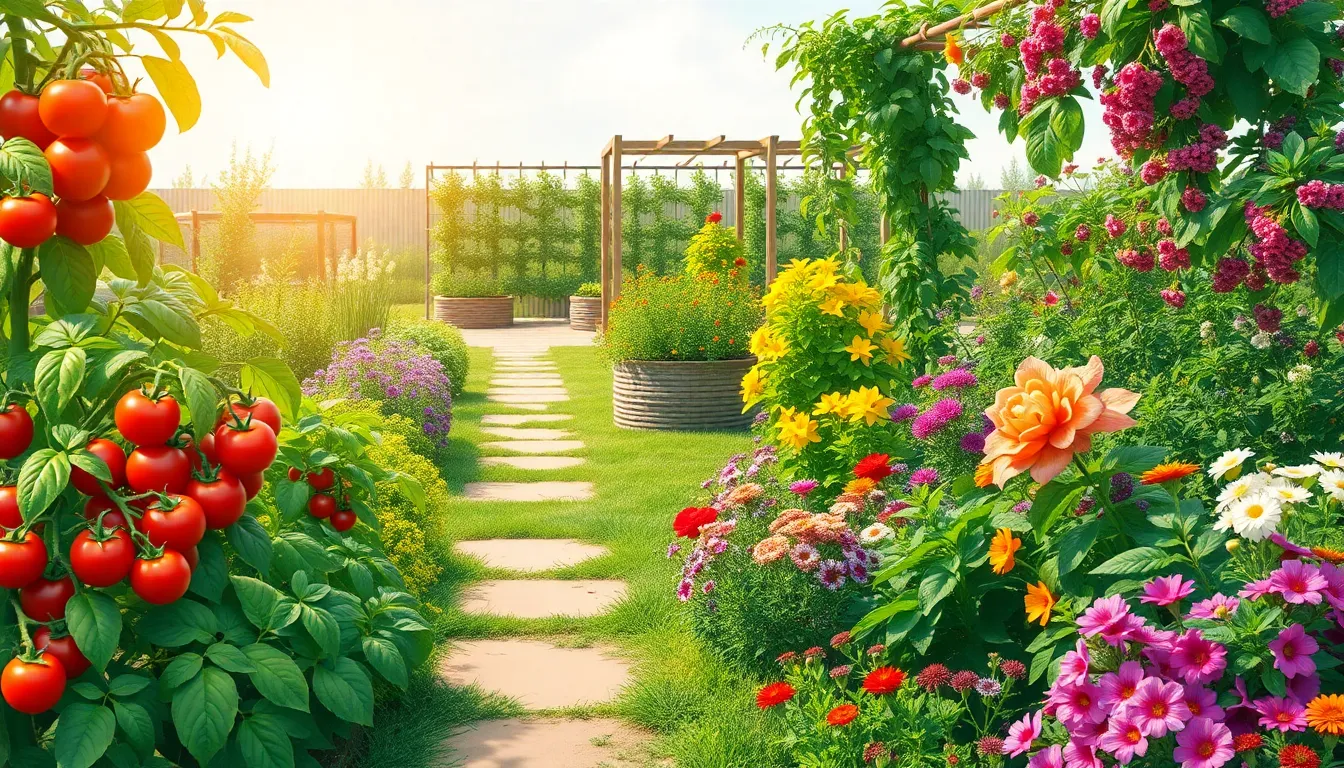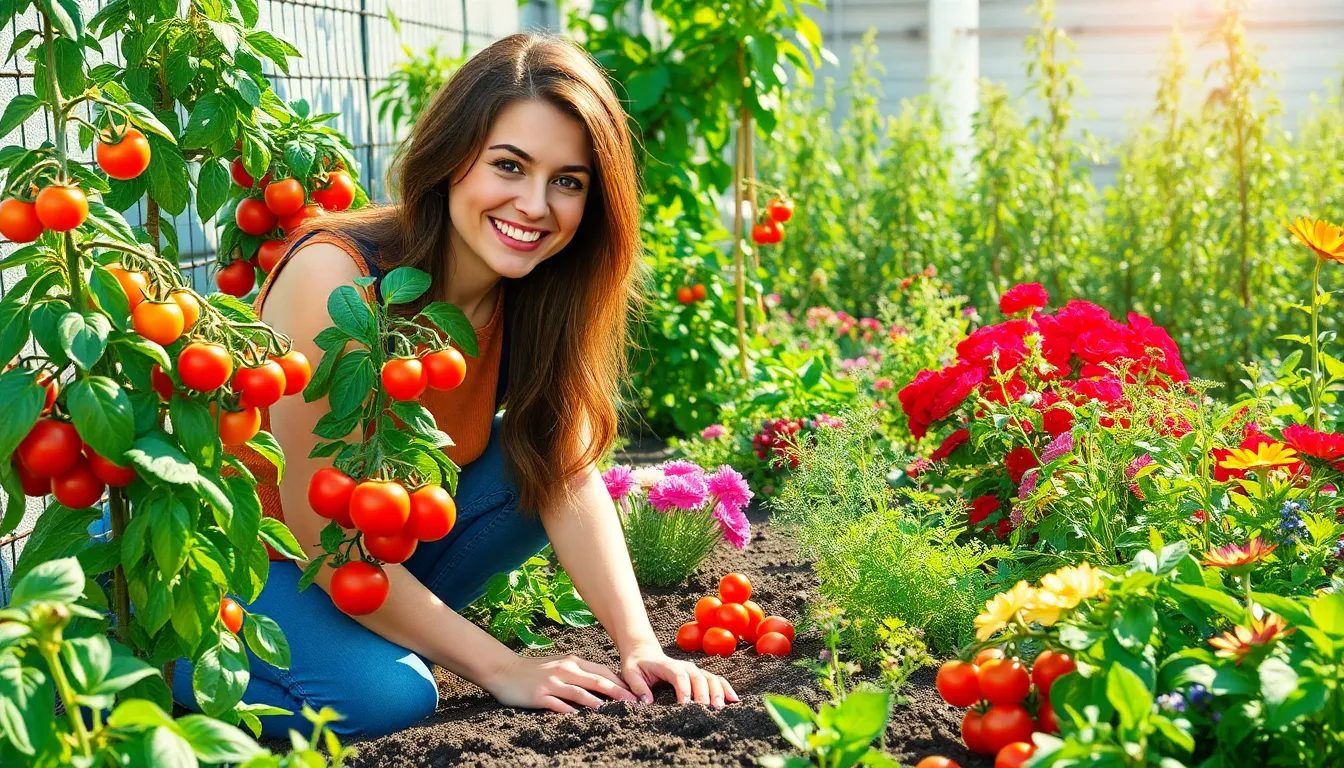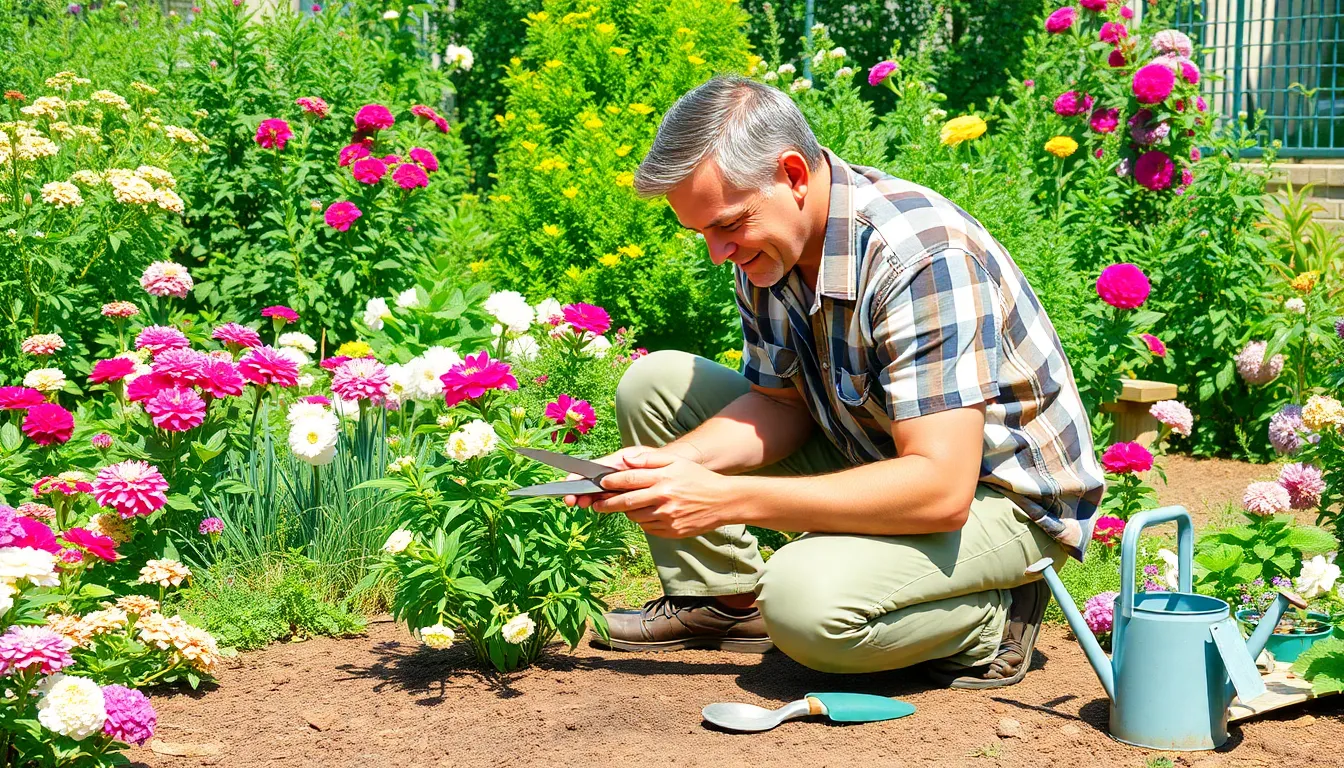Imagine stepping into your backyard and plucking fresh tomatoes, fragrant herbs, and juicy berries right off the vine. Edible landscaping turns your outdoor space into a delicious paradise, blending beauty with bounty. Why settle for a garden that only looks good when you can have one that tastes good too?
This innovative approach not only enhances the aesthetic appeal of a home but also promotes sustainability and healthy eating. It’s like having a salad bar right outside your door. Plus, who wouldn’t want to impress their friends with a garden that’s both a feast for the eyes and the stomach? Dive into the world of edible landscaping and discover how to transform your yard into a vibrant, productive oasis that’s sure to tickle your taste buds and elevate your home’s charm.
Table of Contents
ToggleWhat Is Edible Landscaping?
Edible landscaping integrates food-producing plants into landscaping designs, blending utility with aesthetics. This approach transforms unused outdoor spaces into vibrant gardens.
Definition and Concepts
Edible landscaping combines ornamental plants and edible crops, creating attractive gardens that yield fresh produce. Homeowners can grow a variety of fruits, vegetables, and herbs alongside traditional ornamental plants. Techniques such as companion planting enhance growth while conserving space. This practice encourages diverse ecosystem interactions, promoting biodiversity in the garden.
Benefits of Edible Landscaping
Edible landscaping offers numerous advantages for homeowners. Aesthetic appeal improves with attractive plants that produce colorful fruits and flowers. Nutritional benefits arise from access to fresh produce, cultivating healthier eating habits. Sustainability increases as gardens provide a source of homegrown food, reducing reliance on store-bought items. Additionally, this practice encourages wildlife attraction, supporting local pollinators and contributing to ecological health.
Planning Your Edible Landscape

Planning an edible landscape requires careful consideration of plant selection and design elements for optimal growth and visual appeal.
Choosing the Right Plants
Selecting suitable plants enhances both garden productivity and aesthetic value. Focus on climate conditions, soil type, and sunlight exposure when choosing fruits, vegetables, and herbs. Examples of hardy options include tomatoes, basil, and berry bushes. Incorporating perennials reduces maintenance while providing seasonal yields. Seasonal planting of crops like lettuce or carrots offers diverse harvesting opportunities. Seeking native plants can also promote local biodiversity and attract beneficial pollinators.
Designing for Space and Aesthetics
Creating a cohesive design maximizes landscape space and visual harmony. Consider layering plants with taller ones, like sunflowers, behind shorter varieties, such as strawberries. Arranging edible plants alongside ornamental flowers enhances beauty without sacrificing function. Using raised beds can improve soil quality and accessibility, while pathways facilitate movement throughout the garden. Integrating trellises for climbing plants optimizes vertical space, increasing yields. Design layouts that allow for seasonal rotation of plants to maintain health and productivity.
Maintenance and Care
Maintaining an edible landscape requires consistent attention and care. Regular maintenance ensures healthy plants and abundant harvests.
Watering and Fertilizing
Watering practices vary based on plant types and seasonal needs. Plants generally prefer deep, infrequent watering to encourage root growth. Moreover, using mulch can significantly reduce evaporation, helping retain soil moisture. Fertilizing organic matter, like compost, enriches the soil and nourishes plants throughout the growing season. Apply fertilizers during active growth periods, such as spring and early summer. Additionally, a soil test can identify specific nutrient requirements, allowing for tailored fertilization.
Pest Management Strategies
Effective pest management strategies play a crucial role in edible landscapes. Integrated Pest Management (IPM) combines cultural, mechanical, and biological controls. Planting companion plants naturally deters pests while attracting beneficial insects. Regularly inspecting plants helps identify pest problems early, making interventions easier. Employing barriers like row covers can physically protect plants from harmful insects. Additionally, organic pesticides, such as neem oil, can address infestations when necessary. Maintaining plant health through proper spacing and pruning also minimizes pest issues, fostering a thriving landscape.
Popular Edible Plants for Landscaping
Integrating edible plants into landscaping adds beauty and functionality. Homeowners often select fruits, berries, herbs and vegetables based on their garden’s design.
Fruits and Berries
Fruits and berries provide aesthetics and nourishment. Common choices include strawberries, blueberries, and raspberries, all of which thrive in sunny spots. These plants yield not only delicious produce, but colorful blossoms as well. Fig trees and apple trees also suit various landscapes, offering seasonal interest with fragrant flowers in spring and vibrant foliage in autumn. Planting these varieties creates opportunities for fresh snacks right in the backyard while enhancing curb appeal.
Herbs and Vegetables
Herbs and vegetables serve both culinary and decorative purposes. Basil, rosemary, and chives bring fragrant scents and vibrant colors to gardens. Heirloom tomatoes and kale add texture and visual interest, thriving alongside flowering plants. Using raised beds or containers helps maximize space and ensures easy access for harvesting. Planting these types alongside traditional ornamental plants creates a lush, functional landscape that supports biodiversity and enhances the overall garden experience.
Edible Landscaping in Urban Areas
Urban environments present unique opportunities for edible landscaping, transforming concrete spaces into productive green areas. Homeowners can cultivate a diverse array of fruits, vegetables, and herbs, even in limited spaces.
Benefits for Small Spaces
Small urban gardens can thrive with edible landscaping strategies. Space-efficient plants like vertical gardens utilize walls and trellises, allowing residents to grow crops on limited ground space. Container gardening enables flexibility, where pots and boxes host everything from cherry tomatoes to herbs. These practices can enhance air quality while providing fresh produce, promoting healthy eating. Urban gardens also foster community engagement, as neighbors can share tips and harvests, creating a vibrant and interconnected environment.
Examples of Successful Urban Edible Landscapes
Many cities showcase successful edible landscaping examples. In New York City, the Brooklyn Grange operates rooftop farms, cultivating various vegetables and herbs while reducing urban heat. San Francisco’s community gardens provide opportunities for residents to grow food collectively, enhancing community spirit and accessibility. Chicago’s City Farm integrates produce production in urban areas, proving that sustainability and productivity coexist harmoniously. These models highlight how edible landscaping can enhance urban lifestyle, contributing to food security and environmental resilience.
Embracing edible landscaping offers a unique opportunity to create beautiful and productive outdoor spaces. By integrating food-producing plants with traditional landscaping, homeowners can enjoy fresh produce while enhancing the visual appeal of their gardens. This sustainable practice not only promotes healthier eating habits but also supports local ecosystems and biodiversity.
With careful planning and thoughtful plant selection, anyone can transform their yard into a vibrant oasis of fruits, vegetables, and herbs. Whether in urban settings or spacious suburban gardens, the potential for an inviting edible landscape is limitless. Ultimately, edible landscaping enriches lives by fostering a deeper connection to nature and the food we consume.



